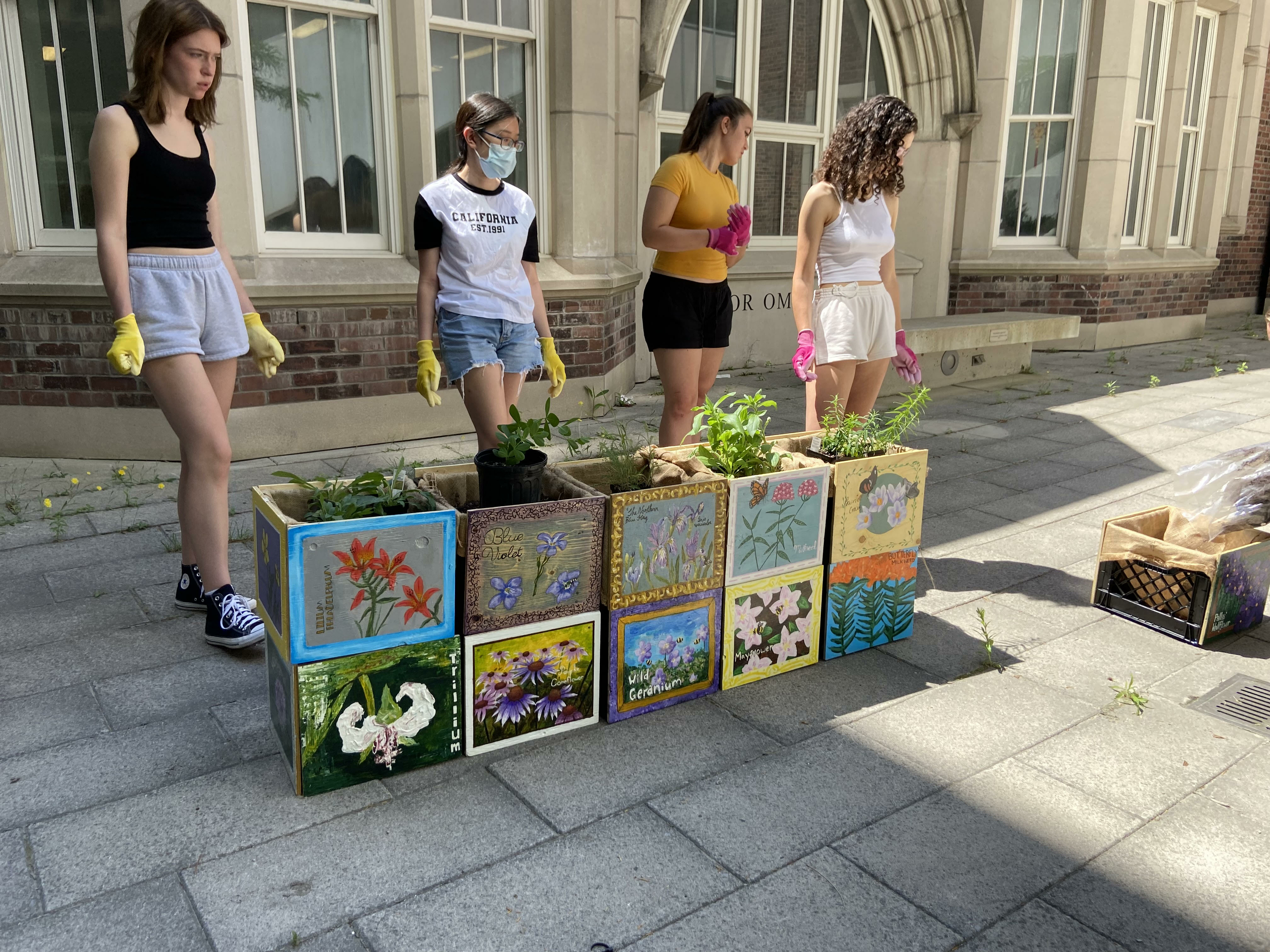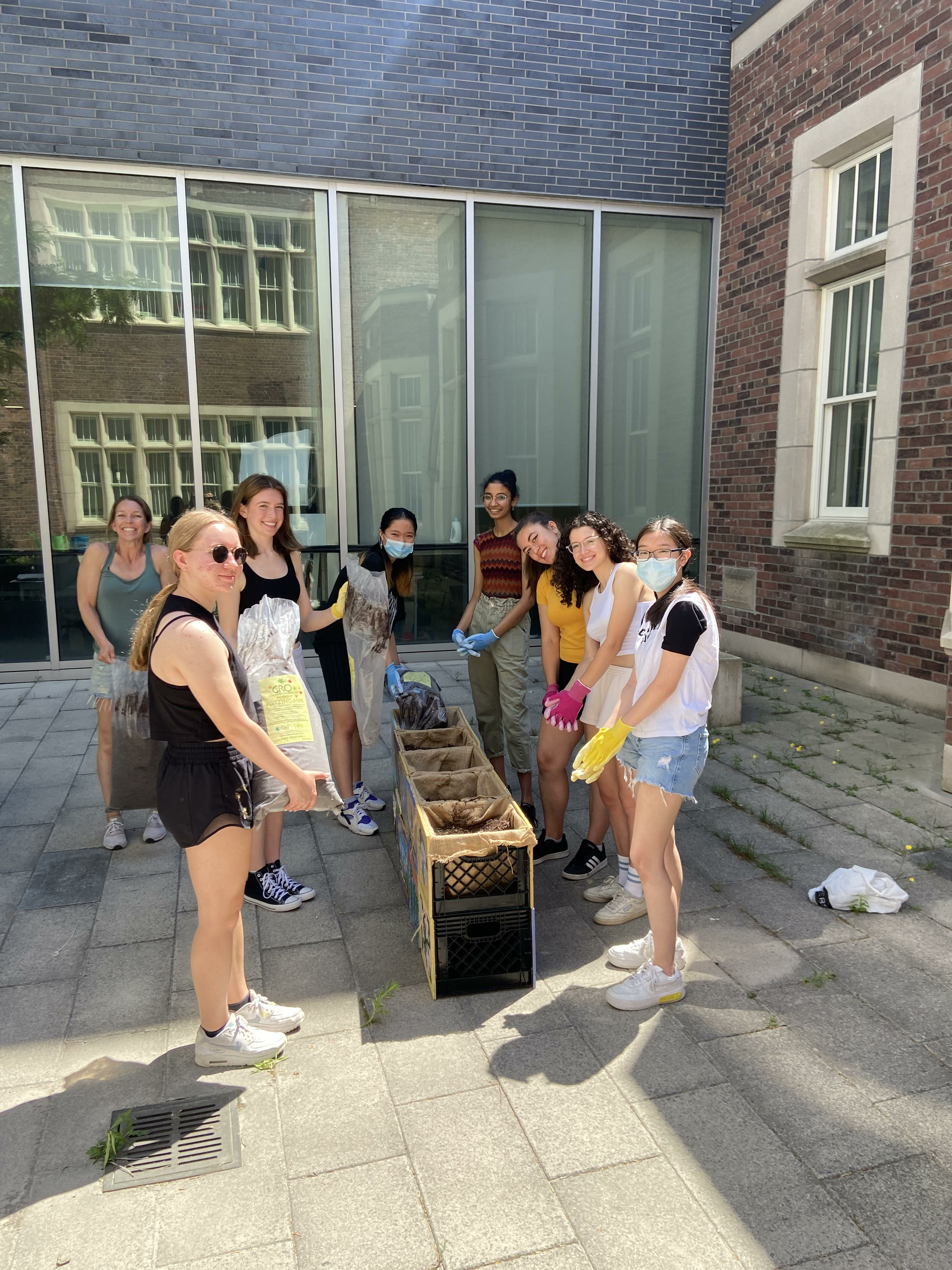
The Bee’s Needs: An update with the pollinate crate team
Recently, I had the pleasure of sitting down with five rather special Munk Threes (Class of ‘20): Allegra Nesbitt-Jerman, Isabella Jokela, Isobel Bird, Yvonne Chen, and Joshua Chong. This group makes up the founding team behind Pollinate Crate. Founded in 2021 with the help of the Carey Projects, Pollinate Crate aims to increase the pollinator population of Toronto by supplying Toronto District School Board (TDSB) schools with pollinator gardens made from milk crates. “We add green to inner city schools in the concrete jungle of Downtown Toronto,” explained Joshua.
 Pollinate Crate began in the second half of MUN105 as an intervention impacting Sustainable Development Goal 15, Life on Land. Joshua noted that during the lab experience, “we started broad,” but when they got down to it, “something local” was going to be feasible and impactful. “So, our goal,” Joshua continues, “was to find something that was missing in our neighbourhoods.”
Pollinate Crate began in the second half of MUN105 as an intervention impacting Sustainable Development Goal 15, Life on Land. Joshua noted that during the lab experience, “we started broad,” but when they got down to it, “something local” was going to be feasible and impactful. “So, our goal,” Joshua continues, “was to find something that was missing in our neighbourhoods.”
The group knew that their initiative would incorporate the TDSB. The TDSB makes up a critical aspect of life on land in Toronto; the board manages a considerable portion of public land. During the initial stages, the group shifted from Vegetation, Biodiversity issues, and Clover fields, all connected to implementation within the TDSB. Eventually, it was settled, and the creation led to pollination. After the Dragons Den Pitch, the group applied to the Carey Projects for funding, so the seed was sown, and Pollinate Crate would bloom.
In their pilot year, the team received over 35 applications from TDSB schools and ended up building and providing “pollinate crates” to four schools. Allegra noted that most of the work that made up their pilot year surrounded logistics and supplies, “we really saw our intervention come together.” In jumping off Allegra, Isobel went on, “building was an intense memory and really a culminating moment. It was lovely to see the schools’ excitement and enjoyment.”
The team also built-in aspects beyond adding greenery to the schools; the crates, which made up the gardens, were blank wood, intended to be painted by students, so the schools could create “a sense of ownership,” says Joshua. The schools also were able to use the crates to help exemplify lessons about life on land.
In looking to the future, the team hopes to increase the number of pollinate crates in the city, continuing to keep feasibility and impact at the heart of the goals of their project.
If you would like to volunteer with Pollinate Crate, or know of a TDSB school which may be in need of a pollinator garden please email pollinatecrate@gmail.com

